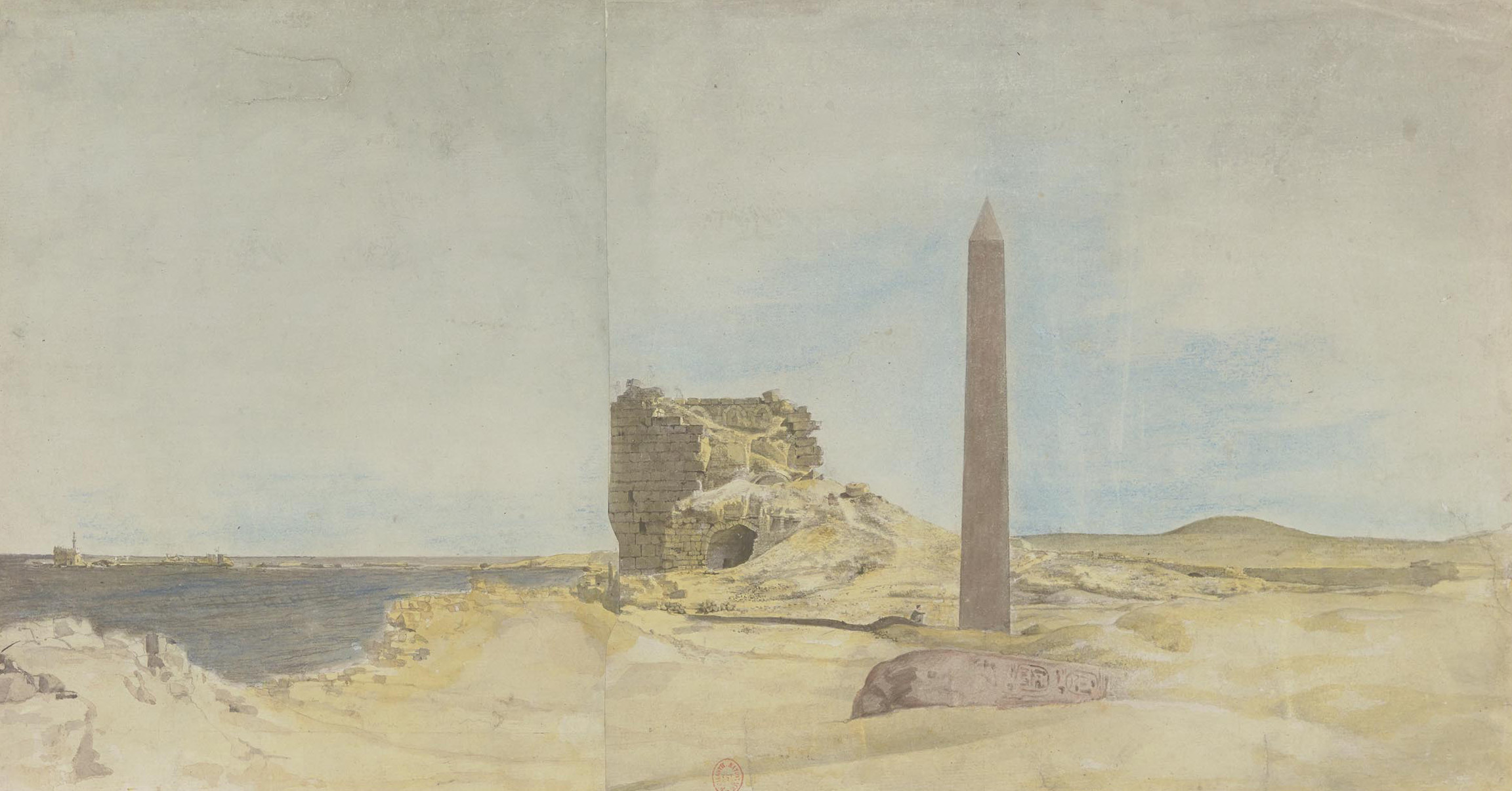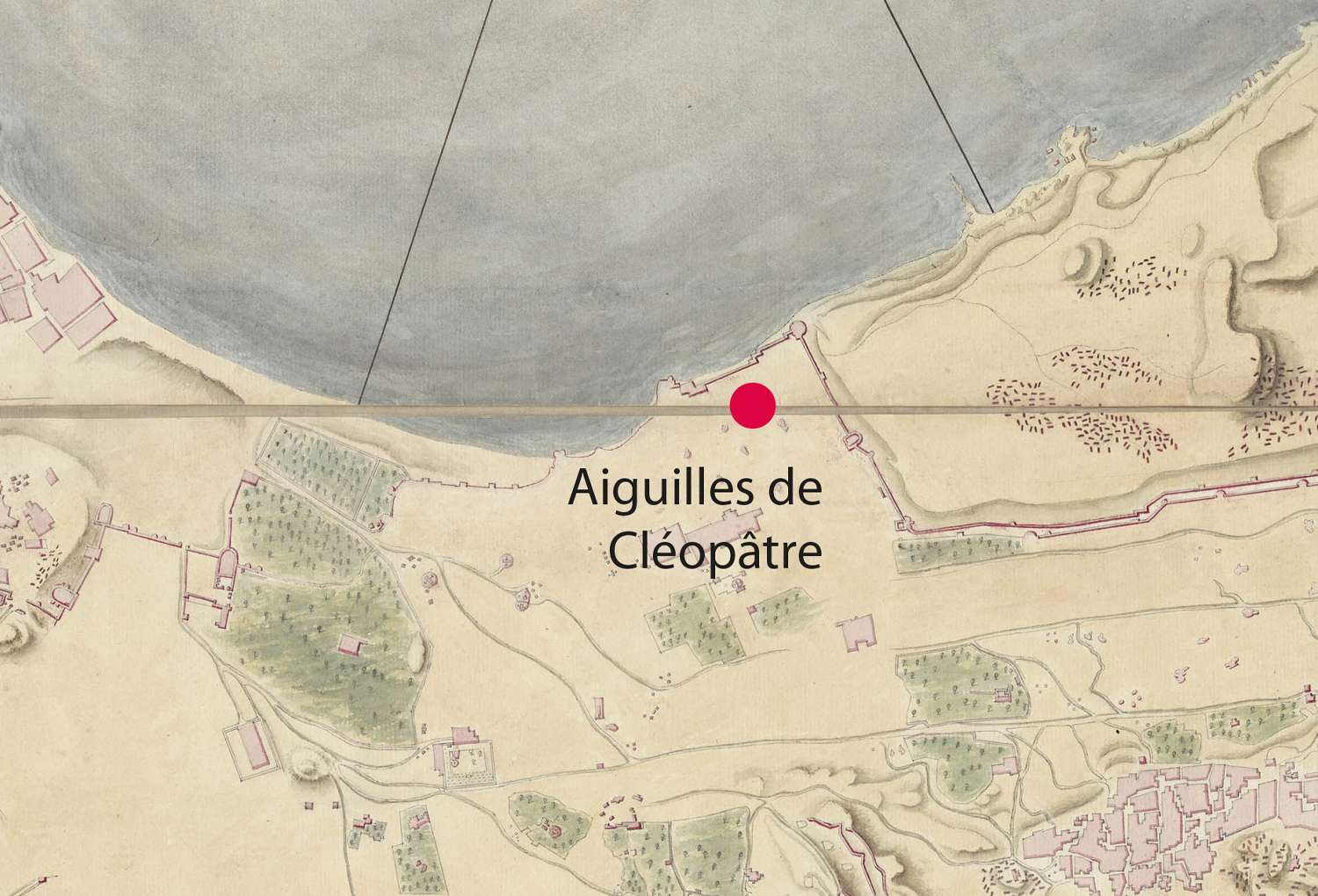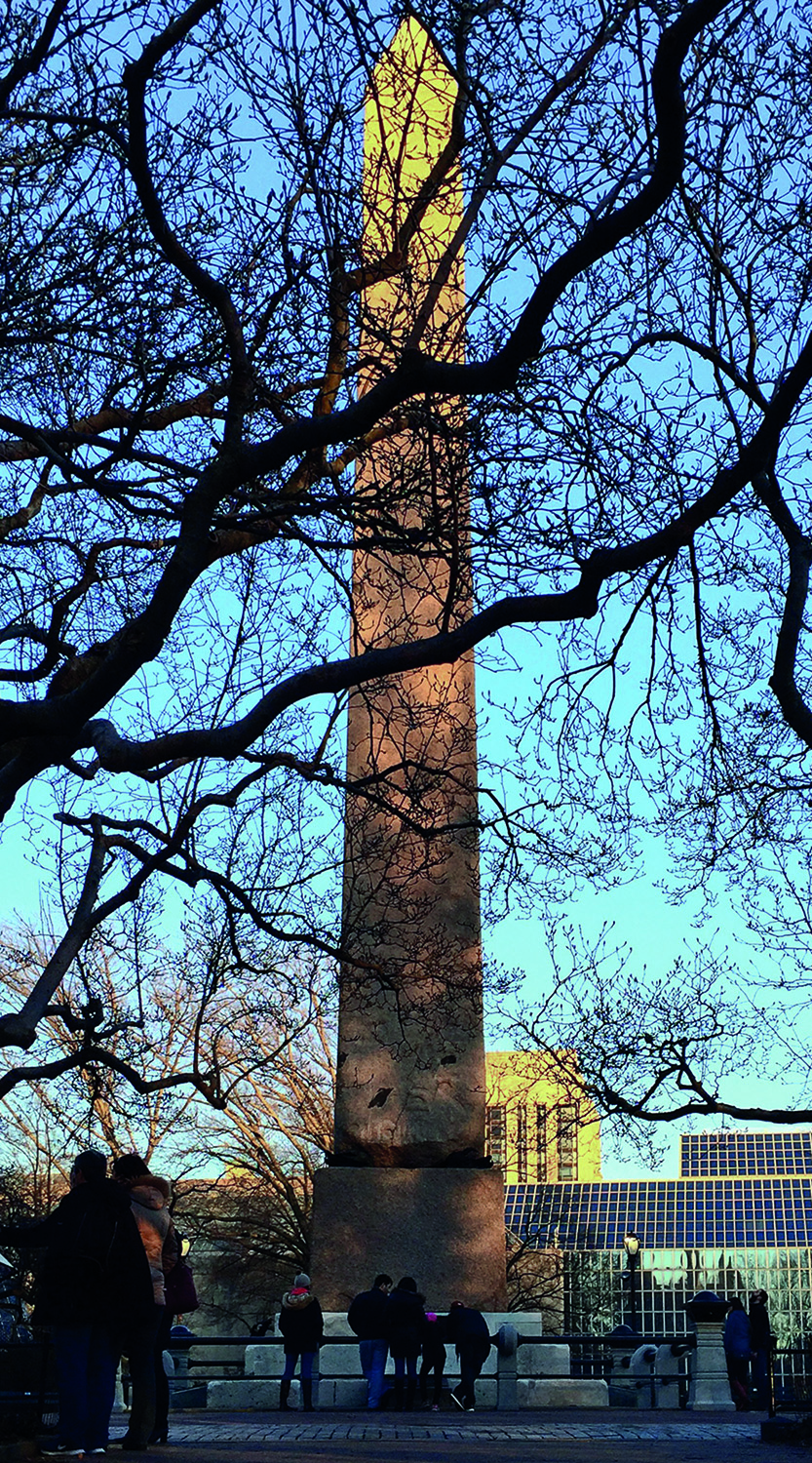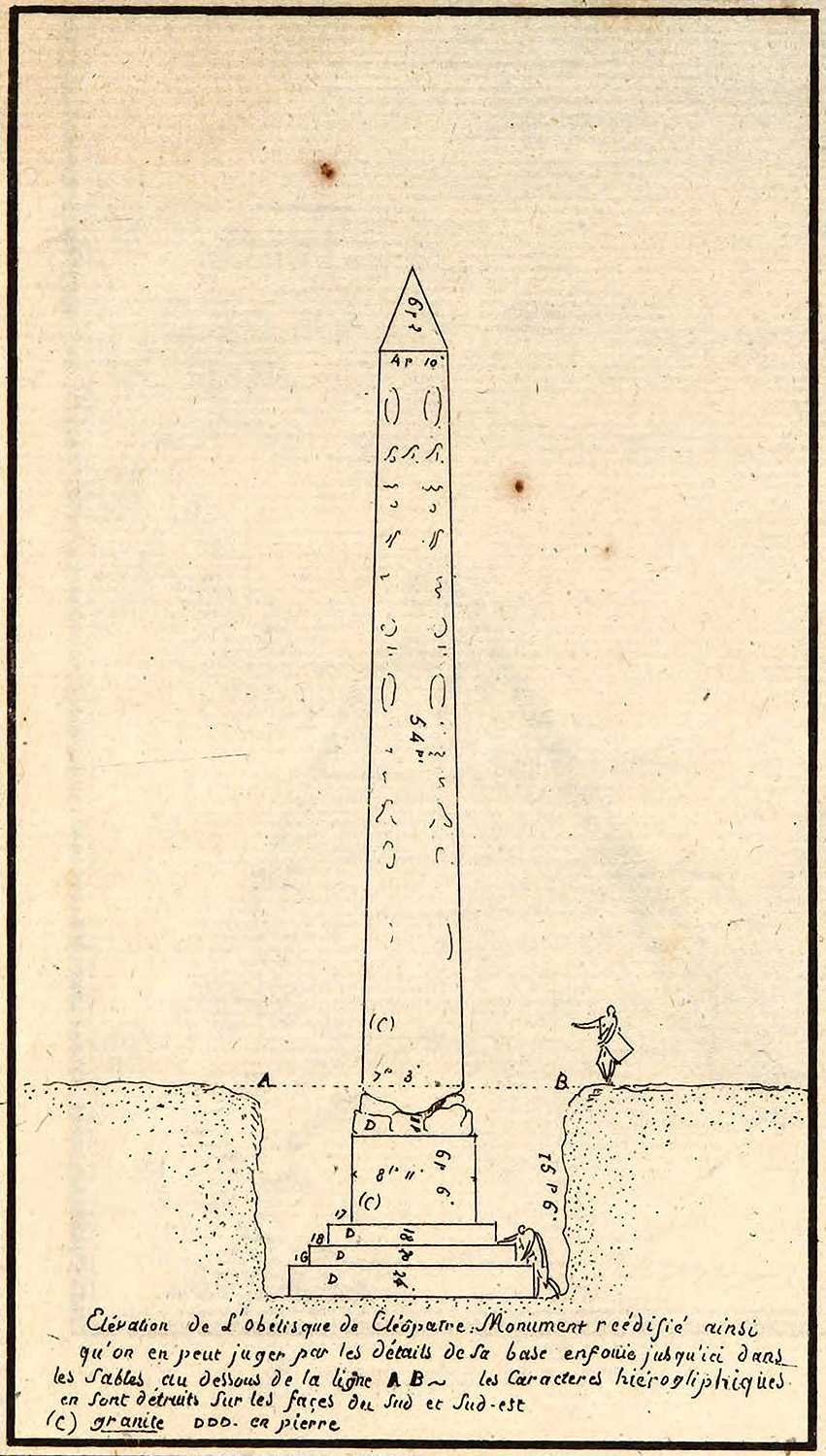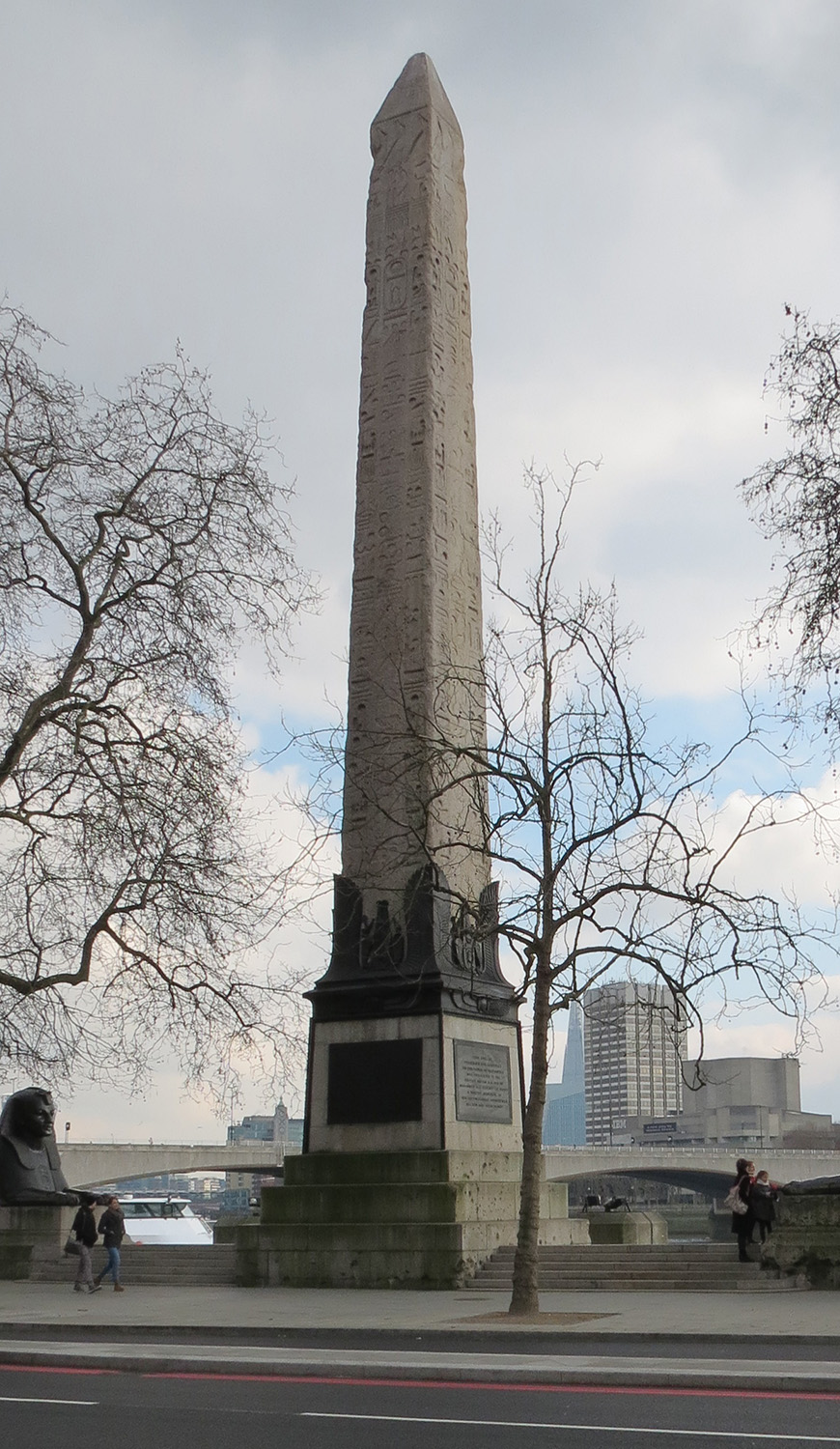Daily life
Attarine Pompey’s Pillar Tower of the Romans Cleopatra’s Needles Wardian Tomb Qaitbay Fort
“View of the obelisk known as Cleopatra’s Needle and of the tower known as of the Romans, seen from the south-west”. Watercolour and lead pencil, François-Charles Cécile, Description de l’Égypte, Antiquités, Planches, Vol. 5, pl. 32
Commonly mentioned in travel accounts, these monuments were wrongly attributed to Cleopatra. In fact, on each of the four sides, a column of hieroglyphs indicates that Thutmose III had them erected around 1439 BC to adorn the temple of Ra at Heliopolis. A millennium and a half later in Alexandria, Octavian Augustus overthrew Cleopatra and Mark Antony and built a temple dedicated to the imperial cult. In 13 BC, he had the two obelisks brought from Heliopolis and erected at the entrance to this sanctuary (1). The sanctuary was destroyed three centuries later, but the granite needles remained in place. During the Middle Ages, one of them gave way and collapsed.
On 8 July 1798, the results of excavations carried out under Nicolas Conté’s direction at the foot of the obelisk, which was still standing, were recorded in a sketch. This document was the first archaeological survey ever carried out in Egypt. Just under a century later, these obelisks left Alexandria for Great Britain (London) and the United States (New York) (2).
Detail from « Map of the city and harbours of Alexandria ». Watercolour, Louis-Jacques Bourgeois, circa 1799, 1/4,000
View of Cleopatra’s Needle, transported to New York City in 1881 and erected in Central Park. February 2016, CEAlex Archives
“Elevation Cleopatra’s obelisk”, Charles Norry, Relation de l’expédition d’Égypte, suivie de la description de plusieurs des monuments de cette contrée, et ornée de figures, Paris, 1799
View of Cleopatra’s Needle, transported to London in 1877 and erected at Victoria Embankment: February 2016, CEAlex Archives

